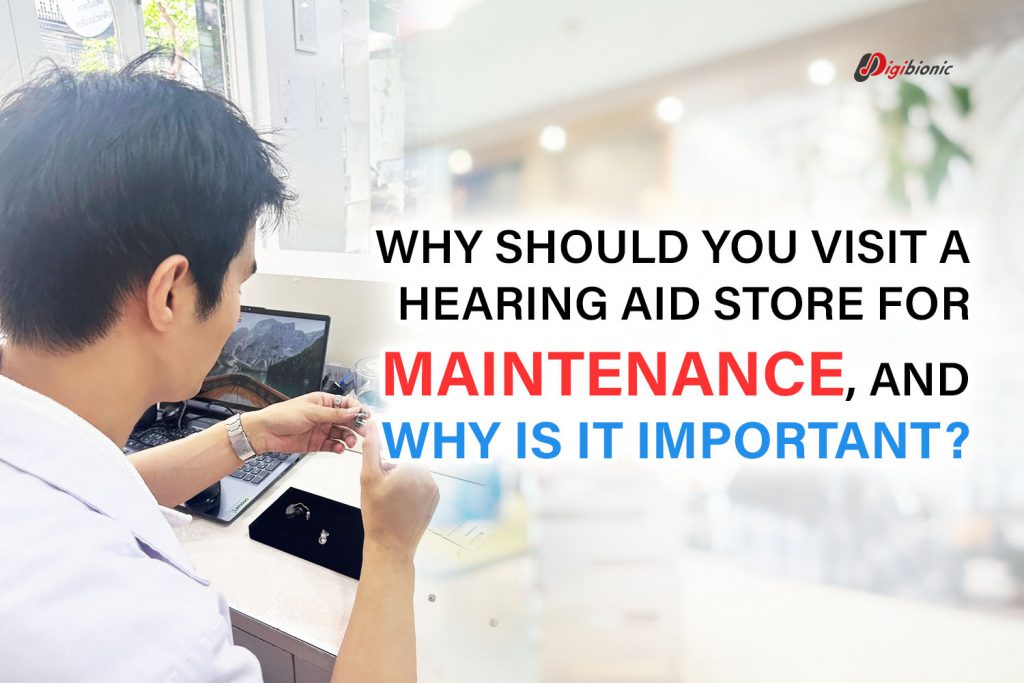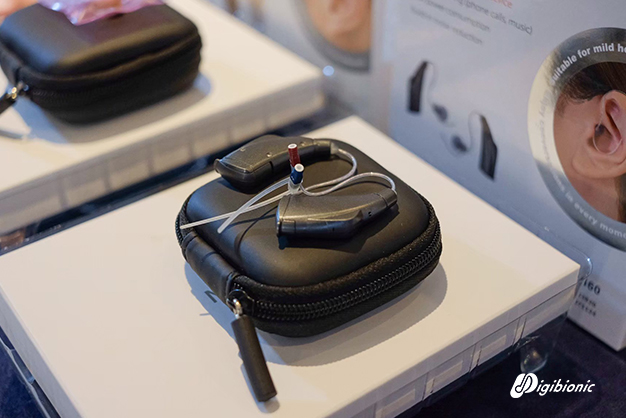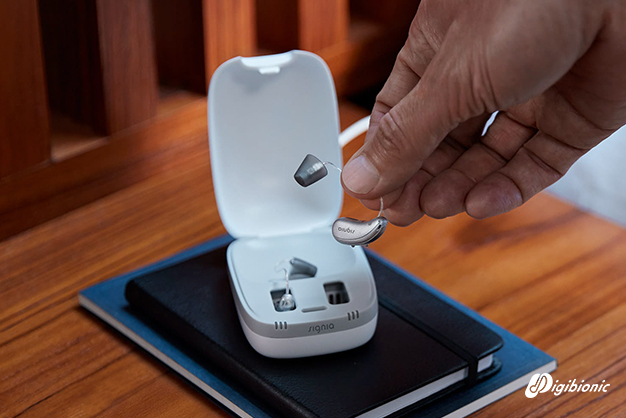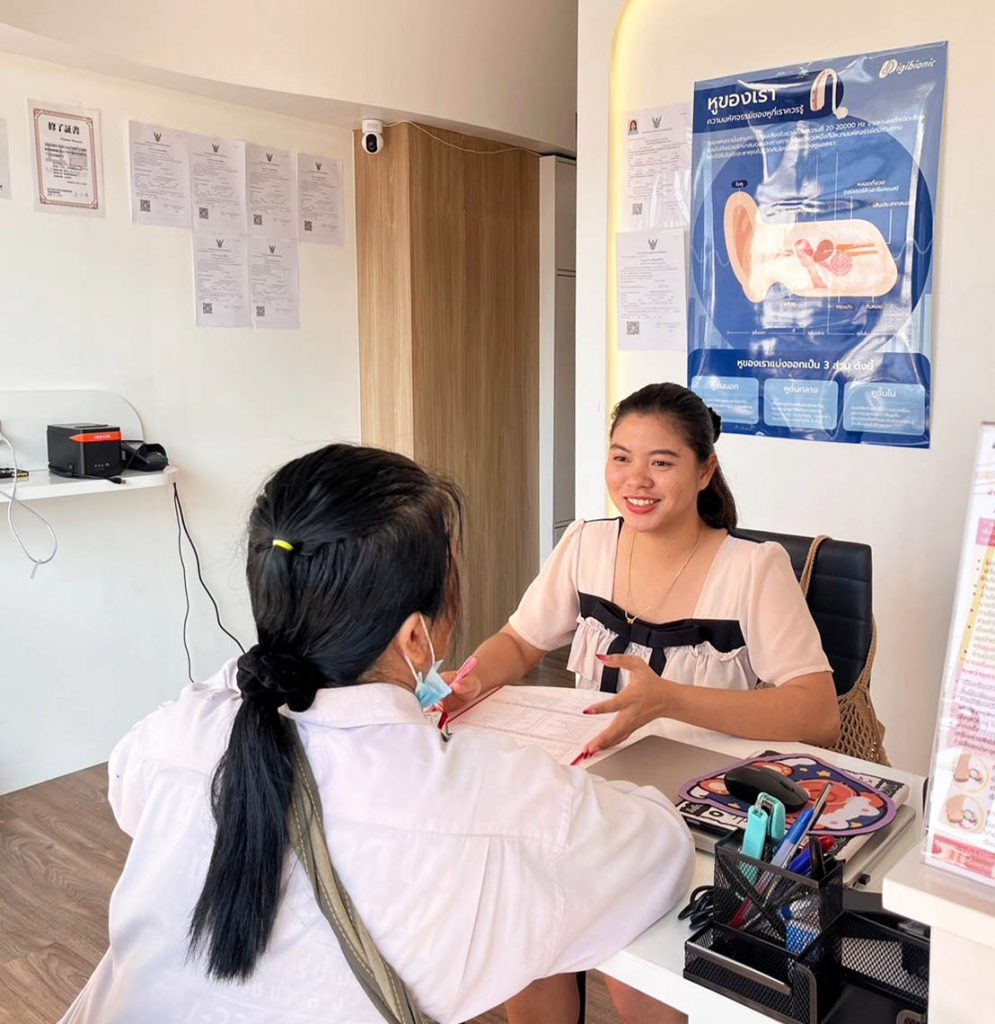
Electronic devices, such as hearing aids, are sensitive to moisture and water. However, water damage usually isn’t caused by the water itself but by the tiny ions contained in it. These compounds can exist in water or air and may enter electronic devices. When they come into contact with the device’s circuitry, they can cause malfunctions and damage.
The metal components in hearing aids are crucial for ensuring the device operates efficiently and remains durable over time. These metal parts are coated to prevent corrosion from water. However, this coating may not always be sufficient—especially if the hearing aid is repeatedly exposed to moisture or rain without being dried or cleaned. Just as you wouldn’t treat a tablet or smartwatch this way, the same care should be applied to hearing aids. Failing to do so can damage the device components and reduce long-term performance and sound quality.

To ensure your hearing aids are completely dry, you should use a hearing aid dehumidifier. Most hearing aids are designed to be water- and moisture-resistant, with coated metal components and a design that prevents easy water entry. While they are generally well-protected, this does not mean you should skip cleaning or drying them. The better you care for and clean your hearing aids, the longer they will function effectively.
There are several ways to dry your hearing aids. Dehumidifier boxes and moisture-reducing devices are popular options and can be purchased at hearing aid stores.
To use a hearing aid dehumidifier, place your hearing aids inside the device, which usually resembles a jewelry or watch box. The box uses air and gentle heat to dry the hearing aids. Dehumidifiers are suitable for all types of hearing aids, including rechargeable, battery-operated, digital, behind-the-ear, in-ear, and Bluetooth hearing aids. The process is simple: place the hearing aids inside, press the start button, and let the device run. Drying may take anywhere from 45 minutes to 8 hours, depending on the model and design of the dehumidifier.
If your hearing aids get wet from rain or while showering, you should immediately use a dehumidifier to prevent potential damage. Many dehumidifier boxes also include UV-C light to disinfect your devices during the drying process.
Other methods to dry hearing aids include using moisture-absorbing packets, typically small plastic beads, which are a convenient and electricity-free option.

The Mimitakara UV-C is a portable dehumidifier and bacteria sterilizer. It is compact, can be plugged in for use, and includes a battery check function. The device uses UV-C light to disinfect and dry hearing aids.
It features a small compartment for placing hearing aids to remove moisture, while the UV-C light can eliminate up to 99.9% of bacteria and viruses on the surface of the devices. The drying function reduces moisture and prevents damage caused by humidity after cleaning, leaving hearing aids clean and ready for use. https://digibionic.co.th/en/product/uvc-hearing-aid-en/

The Signia Pure Charge & Go is a rechargeable hearing aid model that also features a built-in micro-dehumidifying function. When the hearing aids are placed in the Pure Charge & Go charging case, the automatic dehumidifying process begins, keeping the devices dry and ready for use at any time. This feature is especially useful for users in high-humidity environments or situations where the hearing aids may be exposed to moisture, such as during the rainy season or while exercising.
Let people experience the beauty of hearing aids and hear the sounds of their family’s love once again.
If you wish to share that love with Digibionic, please contact us…

เราใช้คุกกี้เพื่อพัฒนาประสิทธิภาพ และประสบการณ์ที่ดีในการใช้เว็บไซต์ของคุณ คุณสามารถศึกษารายละเอียดได้ที่ นโยบายความเป็นส่วนตัว และสามารถจัดการความเป็นส่วนตัวเองได้ของคุณได้เองโดยคลิกที่ ตั้งค่า